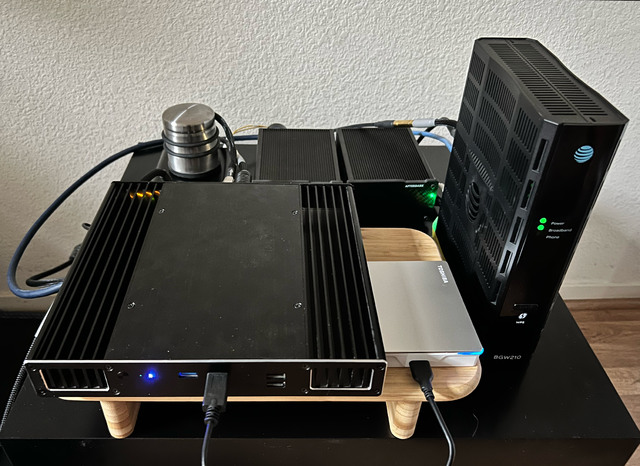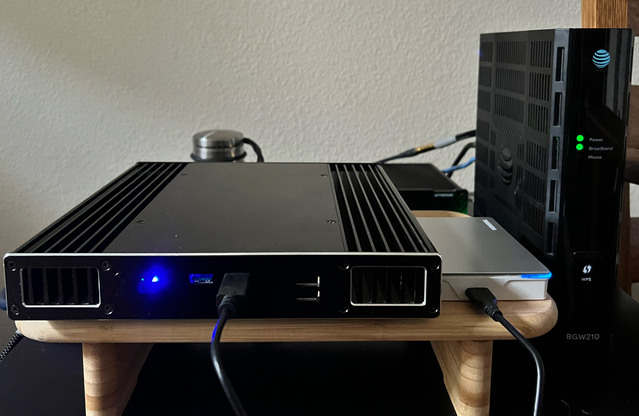Puma Cat
Well-known member
- Thread Author
- #1
Just purchased an Intel NUC i7 in an Akasa case with Roon ROCK installed from a local seller for only $350.
Here are the specs:
NUC7i7DNB
Ballistix 16Gb RAM
NVMe M.2 256GB Sabrent
Akasa fanless case - dead quiet and does not get hot.
Has Roon ROCK OS installed.
It's in a fanless Akasa case which is dead quiet and keeps the computer cool.

Here's a pic of the actual unit (the seller had two of them for sale, I'm buying one of them).

Going to compare this to my current 2012 Mac Mini-based Roon Core, which my hypothesis will be "noisier" as it's powered by a SMPC, has an internal fan, and a fair bit of unnecessary "overhead" of componentry. I'll be powering the Akasa NUC with a quiet linear power supply.
Stay tuned as I'll be providing some listening impressions as to how the Mac Mini compares to the Akasa NUC music server once I get all the bits in and set up. Cheers.
Here are the specs:
NUC7i7DNB
Ballistix 16Gb RAM
NVMe M.2 256GB Sabrent
Akasa fanless case - dead quiet and does not get hot.
Has Roon ROCK OS installed.
It's in a fanless Akasa case which is dead quiet and keeps the computer cool.

Here's a pic of the actual unit (the seller had two of them for sale, I'm buying one of them).

Going to compare this to my current 2012 Mac Mini-based Roon Core, which my hypothesis will be "noisier" as it's powered by a SMPC, has an internal fan, and a fair bit of unnecessary "overhead" of componentry. I'll be powering the Akasa NUC with a quiet linear power supply.
Stay tuned as I'll be providing some listening impressions as to how the Mac Mini compares to the Akasa NUC music server once I get all the bits in and set up. Cheers.




